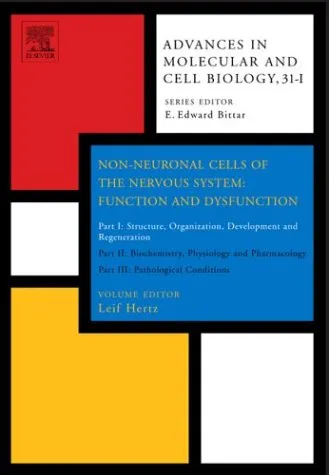Non-Neuronal Cells of the Nervous System: Function and Dysfunction: Structure, Organization, Development and Regeneration: in Molecular and Cell Biology) (Pt. I)
5.0
Reviews from our users

You Can Ask your questions from this book's AI after Login
Each download or ask from book AI costs 2 points. To earn more free points, please visit the Points Guide Page and complete some valuable actions.Related Refrences:
Introduction
Welcome to an in-depth exploration of the fascinating dynamics of the nervous system beyond its neuronal components. "Non-Neuronal Cells of the Nervous System: Function and Dysfunction" delves into the vital roles played by supporting cells like glia in maintaining the intricate balance of the central and peripheral nervous systems. This book shines a spotlight on these often overlooked components of the nervous system and examines their crucial contributions to both physiology and pathology.
Summary of the Book
This book is structured around the various roles and impacts of non-neuronal cells in the nervous system. It begins with a thorough overview of the nervous system's architecture and progresses to cover the diverse array of glial cells, their functions, and their interactions with neurons. The text is divided into distinct sections that address the development, function, and regenerative capabilities of these cells, highlighting their indispensable role in nervous system health and disease.
The narrative transitions into the complexities of glial involvement in pathological conditions, providing insights into their dual roles as both protectors and potential instigators of neurological disorders. This forms a comprehensive resource for understanding how imbalances in glial function can lead to dysfunctions that manifest in a range of conditions, from neurodegenerative diseases to traumatic injuries. Throughout the book, the emphasis is on blending molecular and cellular biology perspectives to offer a cohesive understanding of how these cells contribute to the nervous system's resilience and vulnerability.
Key Takeaways
- Non-neuronal cells, especially glial cells, play pivotal roles in maintaining neural homeostasis and in facilitating repair and regeneration.
- The dynamic interaction between neurons and glial cells is essential for proper nervous system function and response to injury.
- Imbalances or mutations in glial functions can lead to neurological disorders, highlighting their importance in both health and disease.
- Understanding non-neuronal cell biology is crucial for developing therapeutic strategies for neurodegenerative diseases and CNS injuries.
- Research in this field is rapidly evolving, offering promising insights into novel regenerative and reparative therapies.
Famous Quotes from the Book
"The silent companions of neurons, non-neuronal cells lay the foundation of the brain's structural and functional integrity."
"Understanding the dual nature of glial cells may unlock the door to treating a multitude of persistent neurological disorders."
Why This Book Matters
This book offers a fresh perspective on the nervous system's complexity by focusing on the integral roles of non-neuronal cells, bridging a critical gap in both academic and clinical neurology. For students, researchers, and practitioners seeking to expand their understanding of the nervous system, this text provides invaluable insights into the cellular interactions that define neural health and disease. By reading this book, one gains a greater appreciation for the decades of research that have uncovered the intricate dance between glial cells and neurons. This work not only enriches the scientific community's comprehension but also serves as a guidepost for future discoveries and innovations in neurological therapy and research.
Free Direct Download
You Can Download this book after Login
Accessing books through legal platforms and public libraries not only supports the rights of authors and publishers but also contributes to the sustainability of reading culture. Before downloading, please take a moment to consider these options.
Find this book on other platforms:
WorldCat helps you find books in libraries worldwide.
See ratings, reviews, and discussions on Goodreads.
Find and buy rare or used books on AbeBooks.
1185
بازدید5.0
امتیاز50
نظر98%
رضایتReviews:
5.0
Based on 0 users review
"کیفیت چاپ عالی بود، خیلی راضیام"




